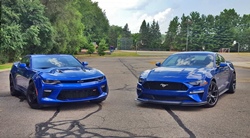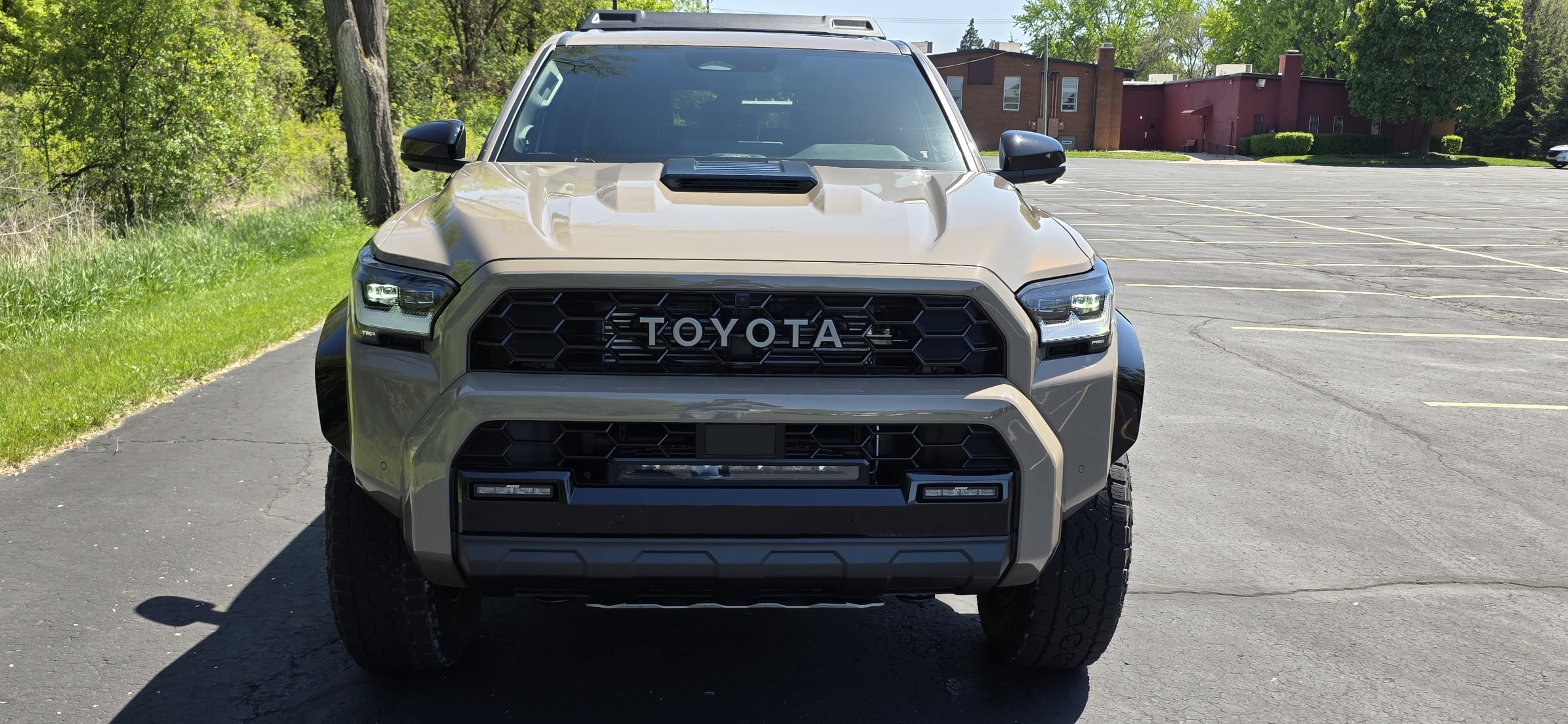When Toyota announced that it would be replacing the long-running 4Runner with its 2025 counterpart, the mood was mixed. The 2025 model was the update that many 4Runner fans always wanted with the SUV bringing a new powertrain, a better interior, and more technology to consumers. That said, it also had lofty shoes to fill with the outgoing one having its roots in the latter half of the 2000s and establishing a strong following of buyers despite the wrinkles it accumulated towards the end of its run.
But which one is best and is it wise to go for the newest 4Runner or is its iconic predecessor the best way to go? We wanted to find out.
2024 Toyota 4Runner TRD Pro

This iteration of 4Runner has managed to make visits to nearly all of our branch offices and as a result, its proven resume should be very familiar not only to readers but to the broader buying public as well. The exterior styling of TRD PRO models like the one Toyota had at a recent event at their North American HQ is still an interesting mixture of classic and edgy modern lines. The front fascia gets aggressively shaped headlights and a two-piece grille with the two halves being separated by a body-color bar. TRD PRO models also get exclusive wheels and side treatments but the rear of the outgoing model is pretty bland.

Slip inside the outgoing TRD Pro and you’ll find a cabin that’s as defiantly old-school as one could get in the SUV market before this version of the 4Runner was replaced by the 2025 model. The infotainment system is from an era when touchscreen units were in their infancy and the fake carbon fiber accents do little to hide the fact they were crafted from plastic. That said, the front seats are comfortable, and while they make occupants feel like they are sitting on the floor, they make up for it by offering a good amount of cushioning though this comes at the cost of some bolstering. The second-row seats are on par for the segment but they lack many of the frills that we take for granted in modern SUVs with the rear’s cargo room and power-operated rear window being the lone highlights.

This iteration of 4Runner only came with a naturally aspirated 4.0-liter V6 that makes 270-hp and is paired with an equally lethargic five-speed automatic. The V6 does its job well in city driving but the setup falls comically on its face in freeway driving with the wheezy V6 not having enough high-end punch to help the 4Runner pass traffic at freeway speeds. Fuel economy is also another weakness but that particular aspect is forgiven somewhat when you consider the additional weight the TRD PRO model is lugging around (and how it makes the steering feel numb.)
2025 Toyota TRD PRO

Toyota says that the 2025 TRD PRO is an improvement over its predecessor in every single category. While the current generation 4Runner also has a bonkers Trailhunter model for sale, we chose to keep that model out and focus on the TRD PRO side of the coin only. On the surface, it would seem that the 2025 model is indeed a sizable upgrade with the exterior styling of the rig we tried out after the event concluded being a noticeable upgrade over the outgoing model. This is mainly due to the designers providing more balance in the 4Runner’s suit of clothes with the chunky front-end being paired better with the rear-end which gets new taillights and a reworked liftgate and bumper to project a more unified look. The 2025 model shares some basic elements with the Toyota Tacoma but look past some of those core similarities and the 2025 model stands out.

The interior of the 2025 model is also a marked improvement over the outgoing model with the front seats here giving a more commanding view of the road which is due to them being raised up slightly. We also love how TRD PRO models finally get some serious bolstering in the seats and this extra amount of support does little to diminish the comfort that owners get to experience from the new leather upholstered seats. The second-row occupants get more features to enjoy and the rear was reworked to not only boost space but also more adventure-ready features including more outlets and an integrated air compressor.
The infotainment system is perhaps the most welcome upgrade in the 4Runner with our tester getting a large 14-inch display (a smaller 8-inch unit is standard) The screen houses upgraded software and TRD Pro models get several menus for trail-focused information and other performance data. Apple CarPlay and Android Auto are standard.

Performance for the 2025 model comes from a smaller 2.4-liter turbocharged four-cylinder but while the rest of the 4Runner range also gets a four-cylinder, this one gets the i-FORE MAX treatment which boosts power to 326 hp thanks to the integrated hybrid system. An eight-speed automatic is the sole transmission here and the combination makes the 4Runner feel more agile and composed. That said, the smaller engine does come at the cost of some solidity in the nose with the front end feeling a bit too light occasionally especially when going over rough terrain. The eight-speed can also be slow to downshift in certain situations but the manually adjustable dampers in the TRD PRO’s suspension allow picky owners to fine-tune the 4Runner’s handling for sharper feedback in tight trail running.
Which one is best?
The answer to that question will partly depend on the preferences of individual buyers but in this case, the 2024 model provides the perfect introduction into some of the upgrades the 2025 model has received. The powertrain is better than ever and we like how Toyota designers have managed to take some of the 2024 model’s core building blocks and managed to refine them into a more precise measuring stick.
However, the 2024 model also has some of the rugged simplicity that defined vehicles from its era with the new 4Runner putting a stronger emphasis on technology and screens. This push into technology also blurs the figurative view of the driver and it can feel like you’re missing out on some of the raw sensations and feedback that the powertrain is providing through the steering wheel and the pedals.

Carl Malek has been an automotive journalist for over 10 years. First starting out as a freelance photographer before making the transition to writing during college, his work has appeared on numerous automotive forums as well as websites such as Autoshopper.com.
Carl is also a big fan of British vehicles with the bulk of his devotion going to the Morgan Motor Company as well as offerings from Lotus, MG, and Caterham. When he is not writing about automobiles, Carl enjoys spending time with his family and friends in the Metro Detroit area, as well as spending time with his adorable pets.

